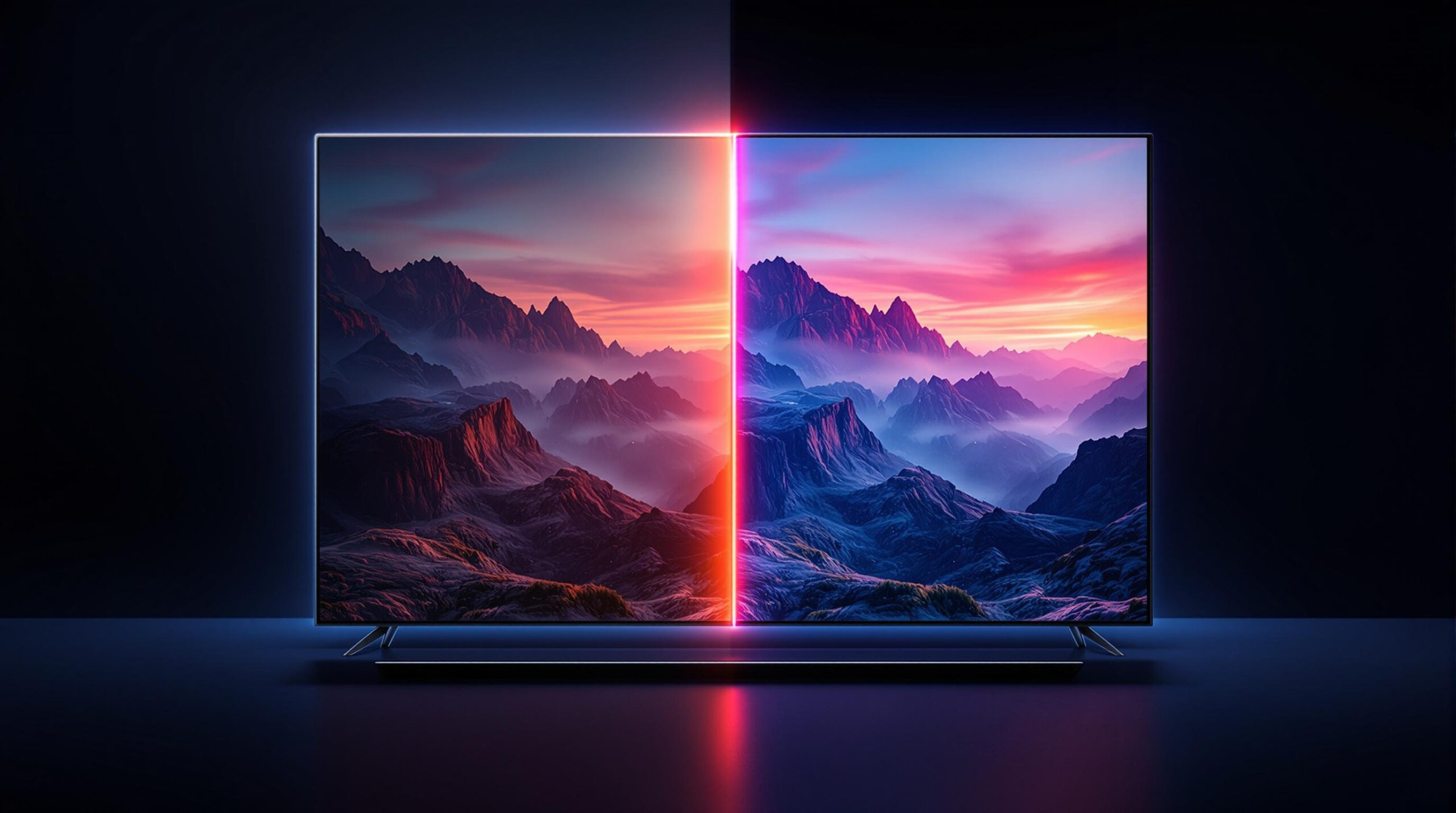As 4K TVs continue to dominate the consumer electronics landscape, the focus is no longer solely on resolution. High Dynamic Range (HDR) formats, particularly Dolby Vision, have emerged as critical elements in the quest for immersive visual experiences. While 4K provides the pixel density, Dolby Vision transforms how those pixels behave—especially on OLED displays. But do you really need Dolby Vision? To answer that, we must examine how this advanced HDR standard works on a technical level, and why OLED’s underlying physics and chemistry make it the ideal companion for Dolby Vision content. This article explores the science and engineering that make Dolby Vision more than just a marketing badge.
OLED’s Unique Advantage: Emissive Pixels and Absolute Contrast
OLED stands for Organic Light-Emitting Diode. Unlike traditional LCD TVs, which use backlights and liquid crystals to modulate light, OLED panels are self-emissive. Every pixel on an OLED screen can produce its own light and turn off completely to achieve absolute black.
This capability gives OLED a decisive edge in displaying HDR content. When Dolby Vision content instructs the screen to display a bright highlight next to a deep shadow, OLED handles the transition with pixel-level precision—something no backlit technology can do without haloing or light bleed. OLED’s infinite contrast ratio is not just visually stunning—it’s physically engineered into the panel’s organic chemistry.
Each OLED pixel is composed of organic compounds that emit photons when energized by an electric current. These compounds are engineered to emit specific wavelengths (colors) and can switch states within microseconds. Because of this rapid response and precise luminance control, OLED panels are ideal for rendering the nuanced changes that Dolby Vision requires.
The Basics of HDR: What Makes It So Important?
HDR, or High Dynamic Range, is a technology that allows a TV to display a broader range of luminance (brightness) and a wider color gamut compared to Standard Dynamic Range (SDR). Rather than increasing resolution, HDR increases the contrast between the darkest blacks and brightest highlights and enhances color fidelity.
Dolby Vision is a dynamic HDR format, meaning it adjusts these parameters on a scene-by-scene or even frame-by-frame basis, unlike static HDR formats like HDR10 which apply a single tone mapping curve across the entire piece of content. This dynamic metadata enables much finer control over image reproduction—but only if the TV can interpret and display it properly. And that’s where OLED comes in.
OLED’s Unique Advantage: Emissive Pixels and Absolute Contrast
OLED stands for Organic Light-Emitting Diode. Unlike traditional LCD TVs, which use backlights and liquid crystals to modulate light, OLED panels are self-emissive. Every pixel on an OLED screen can produce its own light and turn off completely to achieve absolute black.
This capability gives OLED a decisive edge in displaying HDR content. When Dolby Vision content instructs the screen to display a bright highlight next to a deep shadow, OLED handles the transition with pixel-level precision—something no backlit technology can do without haloing or light bleed. OLED’s infinite contrast ratio is not just visually stunning—it’s physically engineered into the panel’s organic chemistry.
Each OLED pixel is composed of organic compounds that emit photons when energized by an electric current. These compounds are engineered to emit specific wavelengths (colors) and can switch states within microseconds. Because of this rapid response and precise luminance control, OLED panels are ideal for rendering the nuanced changes that Dolby Vision requires.
The Physics of Light and Color in Dolby Vision Content
To understand why Dolby Vision benefits from OLED, you must first grasp how human vision perceives brightness and color. The human eye is more sensitive to changes in luminance than to resolution. Dolby Vision leverages this biological fact by using a 12-bit color depth, allowing over 68 billion shades, compared to just over 1 billion in 10-bit HDR10.
This color depth is only valuable if the TV can display subtle shifts in brightness without banding or clipping. OLED’s pixel-level control allows precise modulation of photon output, driven by electric fields interacting with the organic emissive layer. Because there’s no backlight interfering or diluting black levels, OLED TVs can render fine gradations and peak highlights exactly as encoded.
Moreover, Dolby Vision uses perceptual quantization (PQ), a transfer function that maps digital signal values to luminance levels based on how humans perceive brightness. OLED panels, with their fine-grained control, map PQ signals more accurately to visible luminance than traditional displays.
Engineering the Metadata: How Dolby Vision Talks to Your TV
Dolby Vision content includes dynamic metadata embedded alongside video frames. This metadata contains instructions for the TV on how to handle brightness, contrast, and color tone mapping for each frame. While HDR10 provides a single set of instructions at the start of the content, Dolby Vision continuously adapts based on what’s on screen.
For this to work, the TV must contain a Dolby Vision-certified chip—usually built into the display’s system-on-chip (SoC). This processor decodes the metadata in real time and adjusts tone mapping curves accordingly. OLED TVs equipped with Dolby Vision capability can translate these dynamic instructions into per-pixel luminance values, giving rise to images that appear more three-dimensional and true-to-life.
The engineering challenge here lies in synchronization. The TV must decode metadata, apply it to video frames, and update each OLED pixel within a 16.7ms window (for 60Hz content). This requires high-speed memory buffers, fast digital-to-analog conversion, and low-latency pixel driving circuits—all of which are more mature and efficient in today’s high-end OLED TVs.
Chemistry at Work: OLED Lifespan and Dolby Vision Brightness
One criticism of OLED is brightness—specifically, its peak brightness compared to high-end LED/LCDs. This limitation stems from the chemical nature of OLED materials. Blue OLED subpixels, which are critical for producing white and light hues, degrade faster than red or green subpixels. To prevent premature aging, OLED panels often limit peak brightness in white areas.
Dolby Vision helps mitigate this by using dynamic tone mapping. Instead of requiring every bright object to hit maximum luminance, Dolby Vision can smartly adjust each scene’s brightness to avoid overdriving the panel. In other words, it’s not just about how bright the screen can get—it’s how well it manages brightness intelligently.
This intelligent distribution of brightness aligns perfectly with the chemical constraints of OLED. By optimizing light output across the panel rather than maxing it out all the time, Dolby Vision actually extends the functional life of OLED screens.
Display Hardware Coordination: Panel, Processor, and Pixel Drivers
The full Dolby Vision experience relies on a coordinated effort between three major hardware elements: the OLED panel itself, the image processor, and the pixel-driving transistors beneath each subpixel.
The OLED panel must be built with uniformity in mind. Variations in organic material thickness or subpixel alignment can result in banding or color inaccuracies. Manufacturers address this through a process called compensation calibration, mapping pixel response curves and applying pixel-by-pixel adjustments.
The image processor interprets Dolby Vision metadata and recalculates tone curves in real time. These tone curves define how input signal values translate into brightness and color on screen. The processor must balance detail retention in shadows and highlights while maintaining overall color fidelity.
Pixel drivers, built into the thin-film transistor (TFT) layer of the OLED panel, control the voltage delivered to each subpixel. This voltage modulates how much light the organic compound emits. Dolby Vision’s precision requires extremely fast and accurate voltage application—something OLED excels at thanks to its instantaneous response time.
Real-World Viewing: Where Dolby Vision Makes a Difference
While Dolby Vision shines brightest in controlled environments like dark rooms or home theaters, its benefits are visible in a variety of use cases. On OLED TVs, Dolby Vision dramatically improves the viewing of darker scenes—preserving shadow detail and avoiding the washout effect common in other formats.
In brightly lit rooms, the benefits depend on the TV’s ABL (Automatic Brightness Limiter) and peak brightness capabilities. High-end OLEDs like those from LG, Sony, and Panasonic have made strides in boosting brightness while maintaining uniformity. Combined with Dolby Vision’s metadata-based scene adjustments, the content remains legible and cinematic even under ambient light.
One area where Dolby Vision stands apart is gaming. Newer consoles like the Xbox Series X support Dolby Vision gaming, enabling real-time HDR adjustment in interactive environments. Since OLEDs already feature near-zero input lag and fast response times, combining them with Dolby Vision gaming creates a deeply responsive and visually rich experience that’s hard to replicate.
Dolby Vision vs. HDR10: What’s the Real Difference?
Many 4K TVs advertise support for HDR10, but this is often a basic implementation. HDR10 relies on static metadata, which doesn’t adapt as the content changes. This means a TV using HDR10 may underperform in scenes that deviate from the average luminance values defined at the beginning of playback.
Dolby Vision, with its dynamic metadata, recalibrates for each scene or frame. This allows it to prevent highlight clipping in bright scenes and preserve shadow detail in darker ones. On OLED TVs, where pixel-level control is available, this frame-by-frame precision leads to objectively superior image quality—assuming the TV supports full Dolby Vision decoding and rendering.
Compatibility and Streaming Platforms
Most major streaming services now support Dolby Vision, including Netflix, Disney+, Apple TV+, and Amazon Prime Video. However, not all content within these platforms is encoded with Dolby Vision. When it is, the experience on a compatible OLED TV can be transformative, offering richer detail and smoother tonal transitions.
Hardware compatibility is also essential. Dolby Vision support must exist across the entire signal chain: from the content, to the playback device, to the TV’s HDMI input and processing hardware. HDMI 2.1 enhances this pipeline by offering greater bandwidth, but Dolby Vision can also run on HDMI 2.0b, provided the device supports it.
Do You Need Dolby Vision? A Technical Verdict
Strictly speaking, you don’t need Dolby Vision to enjoy 4K content. However, if your TV is an OLED panel—and especially if you care about color accuracy, contrast depth, and motion fidelity—then Dolby Vision unlocks the full potential of your display.
The science speaks for itself. OLED’s emissive nature, rapid response time, and pixel-level brightness control pair perfectly with Dolby Vision’s scene-by-scene precision. While other formats like HDR10+ also use dynamic metadata, Dolby Vision remains the most widely adopted, with broad support from studios and hardware makers.
In many ways, Dolby Vision is the final link in the engineering chain that begins with signal encoding and ends with pixel emission. Without it, an OLED TV still looks great—but with it, it becomes a reference-grade display system capable of rivaling professional monitors.
Conclusion: Dolby Vision Is an OLED TV’s Best Friend
Dolby Vision is more than a luxury—it’s a finely tuned system that complements the chemical and electronic structure of OLED technology. From its scene-by-scene tone mapping to its support for 12-bit color and PQ curve optimization, Dolby Vision elevates the visual experience in ways that are scientifically grounded and visually unmistakable.
For anyone serious about image quality—whether you’re watching a blockbuster in your living room or gaming competitively—Dolby Vision offers benefits that go far beyond the marketing hype. When combined with a high-end OLED TV, it doesn’t just make pictures brighter or more colorful; it renders them truer, more cinematic, and ultimately more human.
4K TV Reviews
Explore Philo Street’s Top 10 Best 4K TV Reviews! Dive into our comprehensive analysis of the leading OLED TV products, complete with a detailed side-by-side comparison chart to help you choose the perfect protection for your devices.




